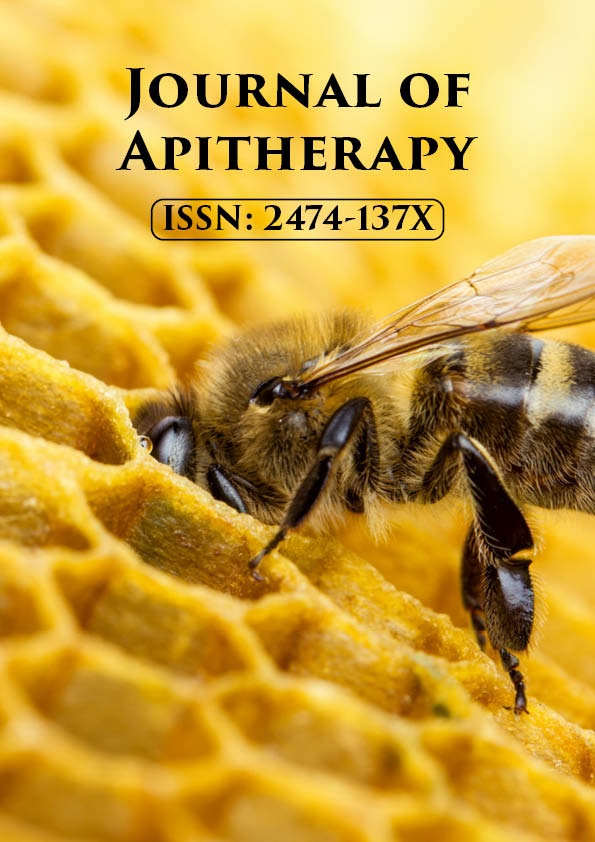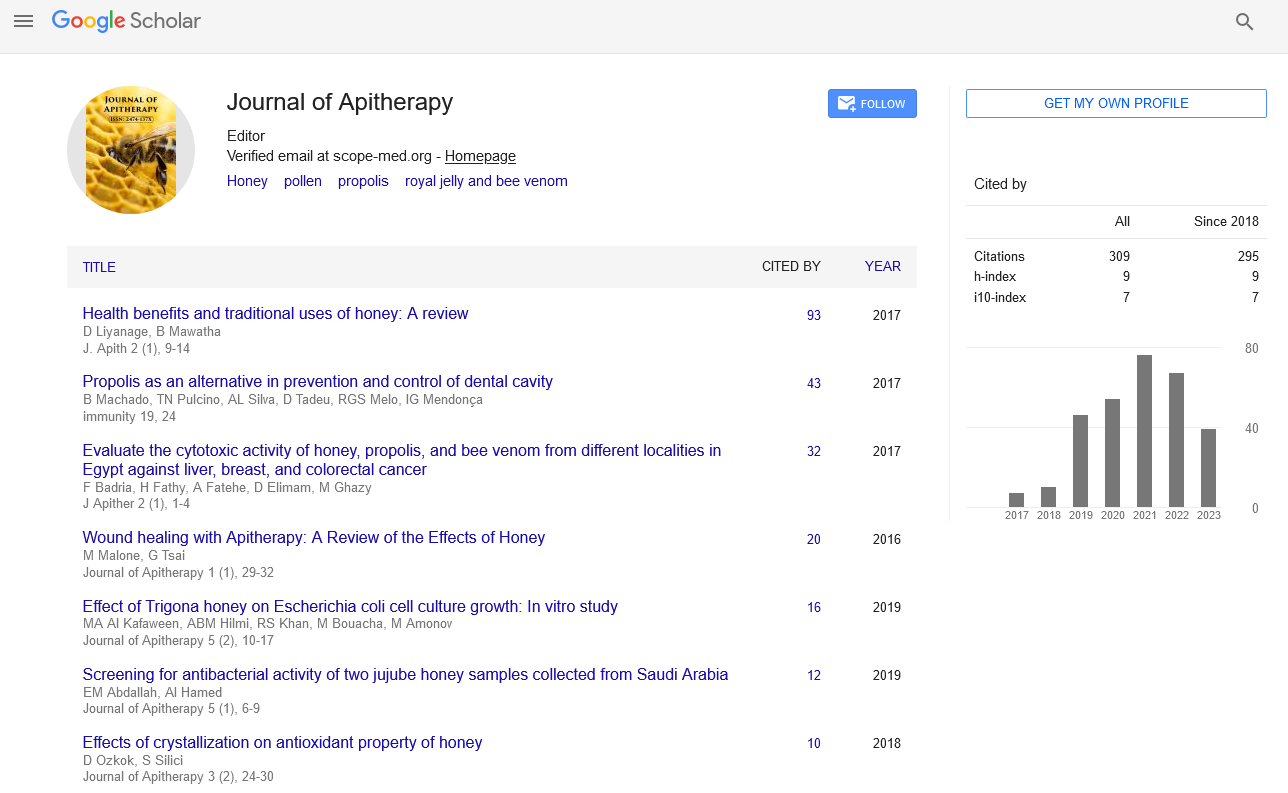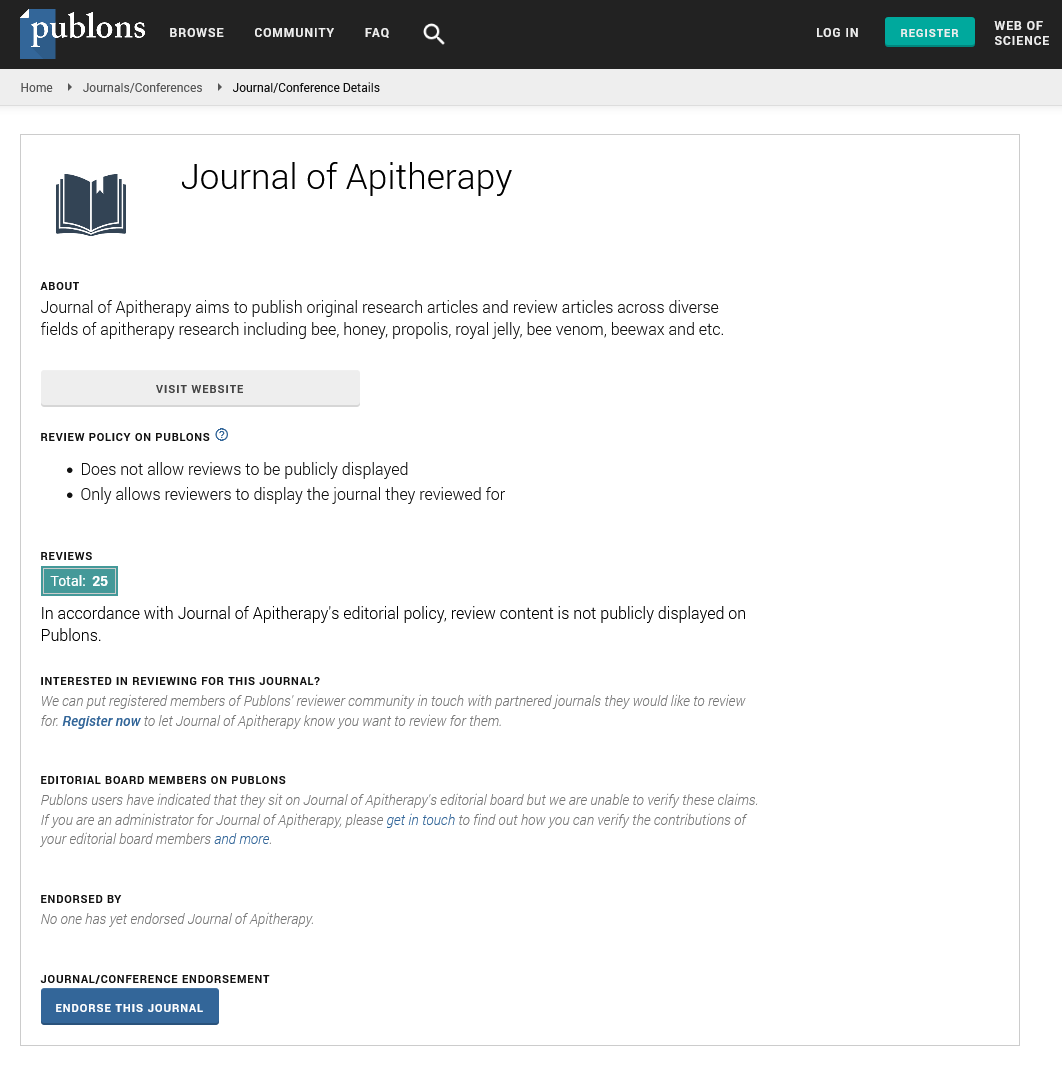Commentary - Journal of Apitherapy (2022)
The Effect of Carbohydrate in the Digestive Tract of Adult Honey Bees
Vincent Ricigliano*Vincent Ricigliano, Department of Biomedicine, University of Porto, Porto, Portugal, Email: vincdnt.ricigliaeo@usda.gov
Received: 04-Feb-2022, Manuscript No. JAPITHERAPY-22-58337; Editor assigned: 07-Feb-2022, Pre QC No. JAPITHERAPY-22-58337 (PQ); Reviewed: 22-Feb-2022, QC No. JAPITHERAPY-22-58337; Revised: 28-Feb-2022, Manuscript No. JAPITHERAPY-22-58337 (R); Published: 07-Mar-2022
Description
Honey bees generate economically valuable honey in addition to pollination and serve as a supply of bee products such as pollen and propolis, a waxy substance obtained from leaf buds. All three items are used in the food industry as well as the pharmaceutical and nutritional supplement industries. Because of the widespread use of honey bees, it is critical to comprehend the elements that influence honey bee health. The colony’s access to proper nutritional resources, as well as hive management procedures, are critical to colony health. Adult honey bees’ digestive system bacteria are expected to play a crucial part in the digestion of sugary meals. The impact of nutrition on honey bee gut microbes, on the other hand, is poorly understood. During periods of low flower abundance, beekeepers frequently augment the natural sources of carbohydrate collected by honey bees, such as nectar, with different types of carbohydrates such as sucrose and invert sugar. By feeding bees from a single colony two natural diets: mnuka honey, a monofloral honey with known antibacterial properties, and a hive diet; and artificial diets of invert sugar, sucrose solution, and sucrose solutions containing synthesised compounds associated with the antibacterial properties of mnuka honey, we were able to compare the effects of these sugar supplements on the relative abundance of bacteria in the gut of bees. When bees were fed sucrose, acetogenic bacteria from the Rhizobiaceae and Acetobacteraceae groups proliferated two to fivefold. These findings show that sucrose promotes the growth of low-abundance primary sucrose-feeders that convert sugars to monosaccharides and eventually acetate. Honey bees require carbohydrate sources such as nectar which they get naturally. Water, pollen, and various amounts of the monosaccharides glucose and fructose, as well as the disaccharide sucrose, make up nectar. The honey bee diet’s carbohydrates may be absorbed by the gut to keep the bees alive, or they may be metabolised by gut bacteria before being absorbed. During the winter and spring, when nectar is short and beekeepers are building colonies for the winter, beekeepers frequently feed their bees additional carbohydrates. Bacteria in the gut of honey bees are frequently symbiotic, with roles that are likely to be critical for bee nutrition, digestion, reproduction, and defence against toxins and pathogens. Bacteria have a number of important roles in the metabolism of carbohydrate substrates, according to metatranscriptome sequencing. Some of these bacteria are sucrose-feeding bacteria that break down sugars into monosaccharides, which are then broken down further into acid metabolites like acetate and lactate, which aid in the breakdown of harmful carbohydrates. The gut bacteria contribute to the enzyme repertoire required for glucose digestion. Several glycoside hydrolases are produced by bacteria belonging to the phylum Actinobacteria and the class Bacilli, which break down complex polysaccharides and simple sugars, as well as peptidases for protein hydrolysis. Glycoside hydrolase family 32, in particular, has been associated to sucrose breakdown. Although nectar, honey, sucrose, and invert sugar are regularly consumed by honey bees, not all carbs are utilised by bees or their microbial occupants. We believe that honeys will impact the diversity and relative abundance of bacteria in the digestive system when compared to sucrose solutions, and that these effects can be linked to differences in sugar composition in these diets.
Copyright: © 2022 The Authors. This is an open access article under the terms of the Creative Commons Attribution NonCommercial ShareAlike 4.0 (https://creativecommons.org/licenses/by-nc-sa/4.0/). This is an open access article distributed under the terms of the Creative Commons Attribution License, which permits unrestricted use, distribution, and reproduction in any medium, provided the original work is properly cited.







